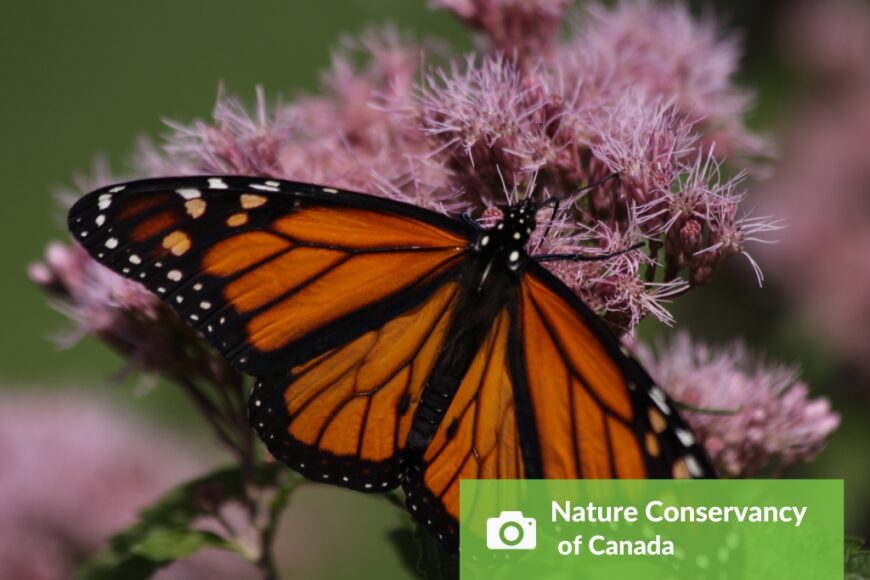Dawson Trail Dispatch, written by Norm Gregoire, June 2024
Page 8 https://issuu.com/dispatch222/docs/dawson_trail_dispatch_june_2024
There is no greater symbol of global conservation in the tall-grass prairie than the monarch butterfly. These regal butterflies have been a part of welcoming summer back to Manitoba for many, many years. As the decades have passed, you may have noticed decreased numbers of monarch butterflies, which leads to the question of what challenges the butterfly must deal with throughout their lifetime.
A huge test that the monarch faces is undertaking their epic annual migration. Our eastern population of monarch butterflies starts their journey overwintering for five to seven months in the oyamel fir forests of central Mexico. This is where close to 99% of the entire population overwinters, meaning a single forest fire or storm could have major consequences for the population. The migration from Mexico to Manitoba is completed by multiple generations over the next few months, with mating and entire life cycles taking place along the way. It takes an average of four generations of monarchs to complete the four-thousand-kilometer migration. The Manitoban-born monarchs will have to complete the entire journey back to Mexico and overwinter as one generation. This means the lifespan can vary greatly, from nine months for the overwintering monarchs to only a few weeks for the earlier migrators. During this extraordinary migration, the butterflies are susceptible to unpredictable weather events and deal with a much more fragmented habitat than once was on their route.
Another interesting aspect of the monarch butterfly is their dependence on various species of milkweed plants. Using unique glands on her feet, the monarch can check which plants are in fact milkweed and then proceed to lay hundreds of eggs, one at a time, on the milkweed plants. After an average of four days, the caterpillar will hatch. Over the course of approximately two weeks, the caterpillar will gorge solely on milkweed growing upwards of seven centimeters. They then form a chrysalis, and after three weeks, they finally emerge as the beautiful orange and black adults.
The striking coloration of the monarch is thought to be a warning to potential predators. Milkweed contains a bitter-tasting chemical that can be toxic to most other species that ingest it. Monarchs have evolved to be able to survive the toxic chemical and, at the same time, store it in small doses in their own bodies. In doing so, potential predators have learned to associate the beautiful colorations of both caterpillars and adult monarchs with a meal that will make them sick. This really is an incredible adaptation of the butterfly, but the total reliance on one type of plant can come with consequences.
With such an array of challenges monarchs must deal with throughout their lives, it is no wonder that the population is in decline. The latest population figures suggest a decrease of 59% from the previous year. Populations are assessed by measuring how many acres the overwintering butterflies are present on in the oyamel fir forests in Mexico. The acreage dropped from 5.5 acres to 2.2 acres. It should be noted that fluctuations using this type of population monitoring can vary drastically from year to year, but over several decades, there has been an overall decrease.
If you are a butterfly lover and would like to learn about what you can do to help monarchs and other native pollinators, please join me on this month’s Adventures with Nature Norm in the tall-grass prairie. This month’s theme will be focusing on prairie butterflies. All attendees will also be entered to win the chance to join the Assiniboine Park Conservancy team to help release the critically endangered butterfly, the Poweshiek skipperling, back into the wild! With as little as five hundred Poweshiek skipperlings left globally, this is a unique opportunity. For more details, please contact info@sharedlegacymb.ca.

